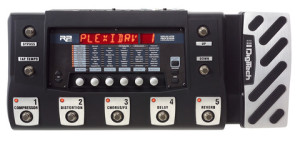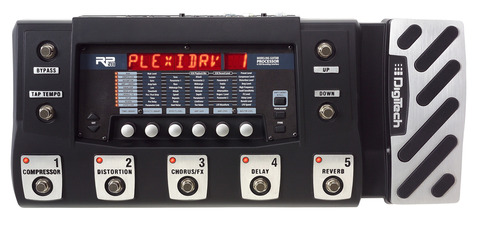
Another day, another (country) session
I took some time off this week from working on the songs and arrangements for my upcoming record, “The Lucky One,” which is set for recording in the third week of September in Philadelphia, to record harmonica parts for Austin TX producer Bobby Flores. (Congratulations Bobby on winning the 2015 Ameripolitan Male Western Swing Award! That’s the style Bobby was playing when I met and jammed with his band years ago in Austin, and it sure was fun.)
Bobby contacted me late last week and sent a couple of mp3s. The music was very interesting: country with more than a touch of rock and roll, and some unusual chord changes for this genre. (When you’re going from F major changes on the verses to C major changes on the chorus to a solo in Bb major in the same song, it’s a little unusual for country.) Bobby told me he was going to send the changes, but he never got around to it. Oh well; that’s why we make the big bucks…
As per usual for this time of year, I’m out in Tetonia, Idaho, far from my home studio in Monroe CT. Not to worry. The laptop Jim Rosenberry built for me is portable and powerful, and it goes where I go. Add a Digitech RP–in this case my RP500, loaded with my patchset for Digitech RP–for an audio interface, plus an Audix Fireball V, and I have everything I need to make great harmonica tracks. The Fireball V is crucial, because it’s the only mic I know of that can produce beautiful acoustic harmonica tracks when it’s hand-held, which is REALLY important when you’re recording in totally crappy rooms like the one I use for recording in Idaho. (The place is essentially a long rectangle with no sound treatment, and it sounds like a cave. There is no way I’m going to let that room sound into a recording.)

FX? We Don’t Need No Stinkin’ FX
All those chord changes notwithstanding, country music demands pretty simple harmonica sounds. To put it another way, the first thing I think of in terms of harp sounds for the genre is never a patch with an octave down pitch shift followed by an envelope filter or a flanger. The first thing I did with the RP500 was dial up one of my Direct amp model patches. The Direct amp model basically takes whatever’s at the RP’s input, adds or subtracts gain to the signal, and sends it to the output. When coupled with the Audix Fireball V, the resulting sound is clean, clear, and full–a great harp sound to send to any producer. (Hey, if they decide they hate clean and they want to f— it up, they’ve got all the FX they need on their own computers.) I have no doubt that Bobby is going to add whatever ambience he wants to my sound, so before I recorded I used the RP500’s dedicated footswitches to turn off the reverb and delay, so the only effect running on the RP was the amp modeling.
I set up a new project in Cakewalk Sonar, my DAW, and loaded in the mp3s Bobby sent to me. Then I set up three harp tracks for each of the songs (we’ll call them “Texas” and “Tennessee,” which happen to be the first words in their respective titles) and started recording.
I did three takes on “Texas”, two with an acoustic sound and one with a patch based on a GA40 amp model for a little more grit. The GA40 patch had a LOT of gain dialed in, so I dropped the gain level on the patch down to a much more moderate 34 (as opposed to the original setting of close to 60, which is some pretty crunchy gain) to smooth it out a little. (I did mention that this is country music, right?) Of course, I took off all the FX except amp modeling before I recorded with this patch. For all the takes on “Texas” I used a Manji in C played in second position. I like Manjis for country music; they play fast and sweet, and they’re just the thing for those quick Country lines. The first harp I tried was a Seydel Session Steel in C, but I just couldn’t get the chords to sound sweet enough, so bye bye Session Steel, hello Manji.
Let the Producer Choose
My favorite of those tracks was the second acoustic take, which featured a rippin’ solo, but I sent Bobby separate rough mixes with the acoustic and amped-up takes, and one with both, because I liked the way the rhythm licks sounded when both tracks played together. I used the same Direct model setup to record two acoustic tracks for “Tennessee,” of which I sent Bobby the second. “Tennessee” is the song with all those chord changes, and I ended up using a Manji in F, played in first and second positions, for the verse and chorus, and a Manji in Bb, played in first position, for the solo section.
It took more time to record two takes for “Tennessee” than to record three for “Texas,” because all those chord changes on “Tennessee” demanded a lot of extra attention. But that’s part of the fun, innit? Taking a beast of a song and making it behave?
Get Paid and Wrap it Up
Bobby checked out the rough mixes and liked them. He paid me via Paypal, and I sent a RAR (compressed) archive file containing all the harp tracks, soloed, in the form of 24-bit 44.1 kHz WAV files–a nice high-resolution format that happens to be the RP500’s highest-quality recording mode.
So there you go: another session conducted over the Internet, with the participants separated by a thousand miles or so, collaborating on their own schedules. Of course it would be absolutely tops to be in the room with the producer when the tracks are cut, so we can get double the brain and emotional power working on the song in real time. But I’m still knocked out by the fact that I can collaborate with musicians all over the world, no matter where they, or I, happen to be. How cool is that? And if you take all that for granted, lemme tell you, you weren’t recording in the 1980s, when a basic recording setup with overdubbing capability cost thousands of dollars, and sending a track to a producer the second you finished it was a wishful and seemingly impossible fantasy. (It takes time to box a tape and take it to the post office, and more time for that tape to make its way halfway across the country.) How delightful to live in an era when those fantasies come true.
Tags In
Related Posts
Leave a Reply
You must be logged in to post a comment.
WHAT’S NEW
Categories
- Audio/Video
- Blog
- Blue Future
- Digitech RP Tricks and Tips
- Discography, CDs, Projects, Info, Notes
- Featured Video
- For the Beginner
- Gallery
- Hunter's Effects
- Hunter's Music
- Huntersounds for Fender Mustang
- Meet the Pros
- More Video
- MPH: Maw/Preston/Hunter
- My Three Big Contributions
- Player's Resources
- Pro Tips & Techniques
- Recommended Artists & Recordings
- Recommended Gear
- Recorded Performances
- Reviews, Interviews, Testimonials
- The Lucky One
- Uncategorized
- Upcoming Performances
- Zoom G3 Tips and Tricks

